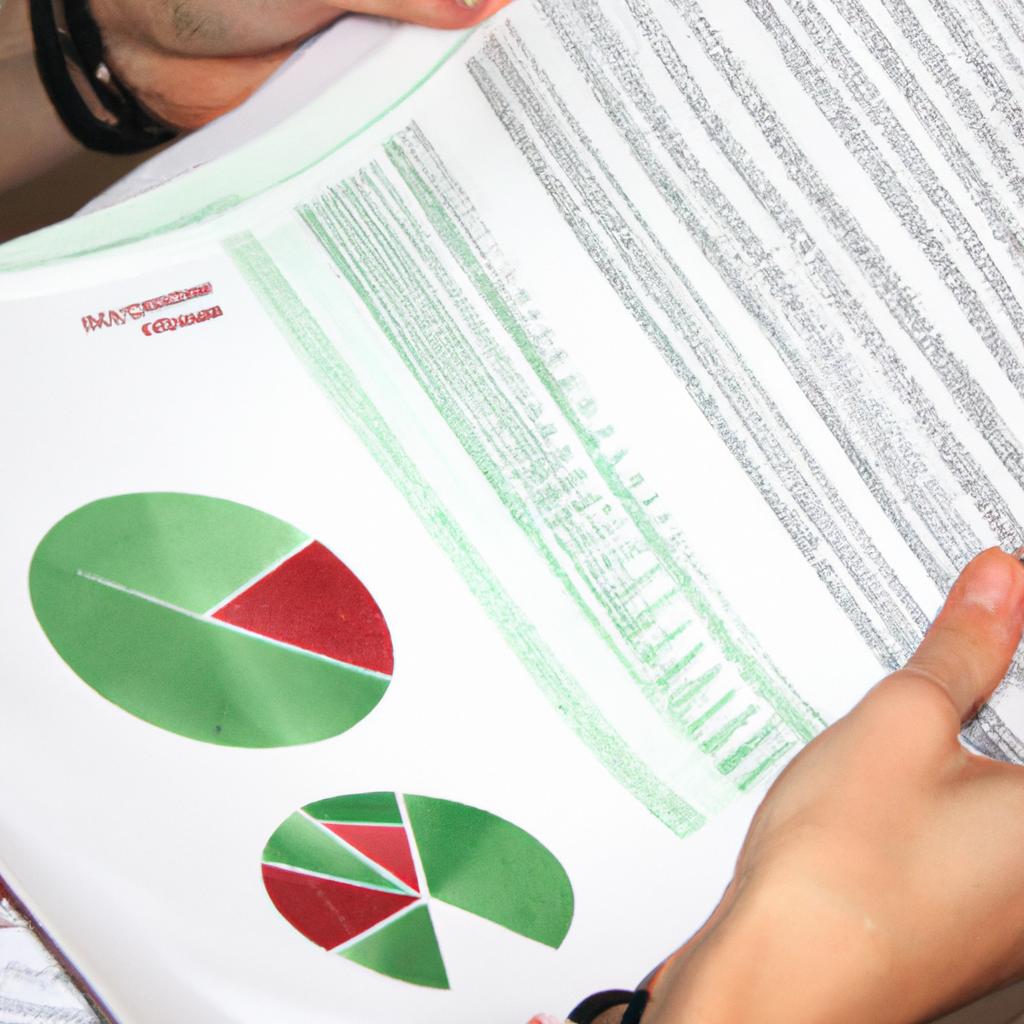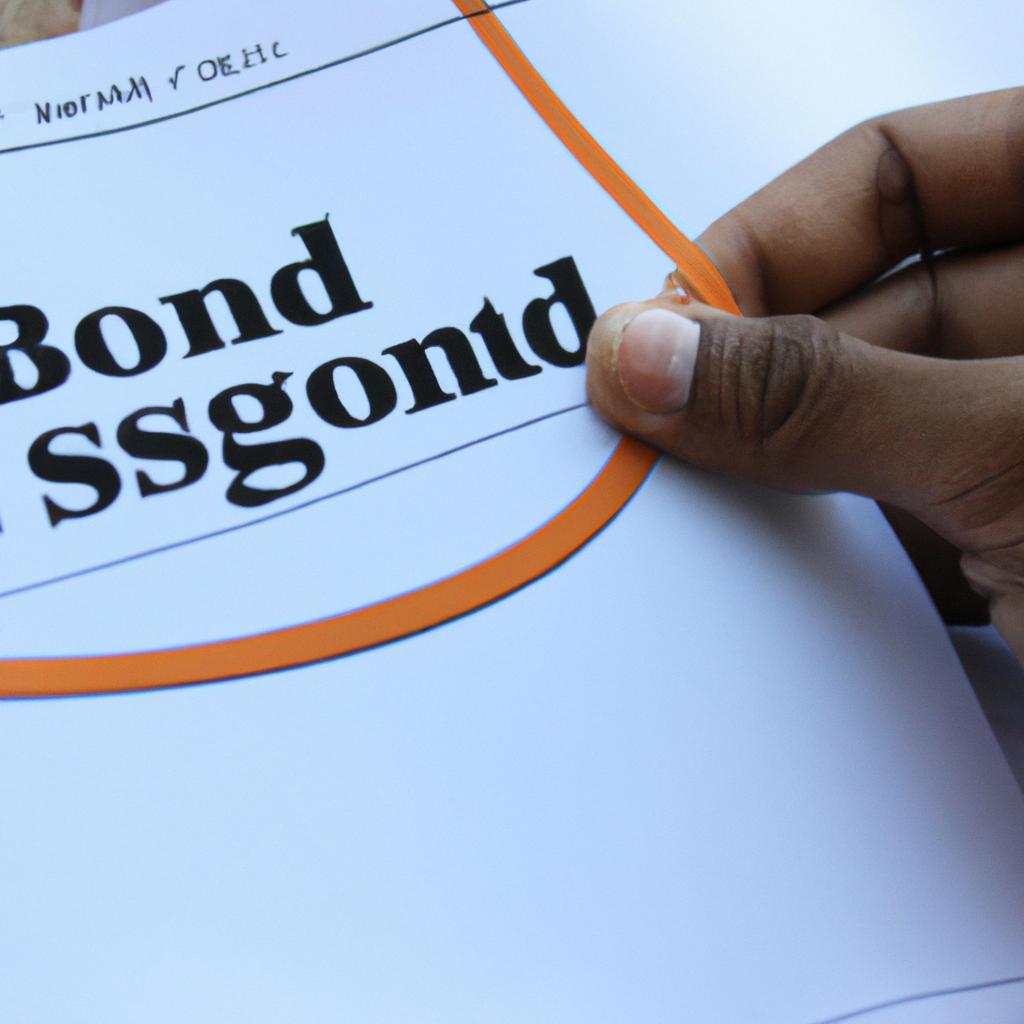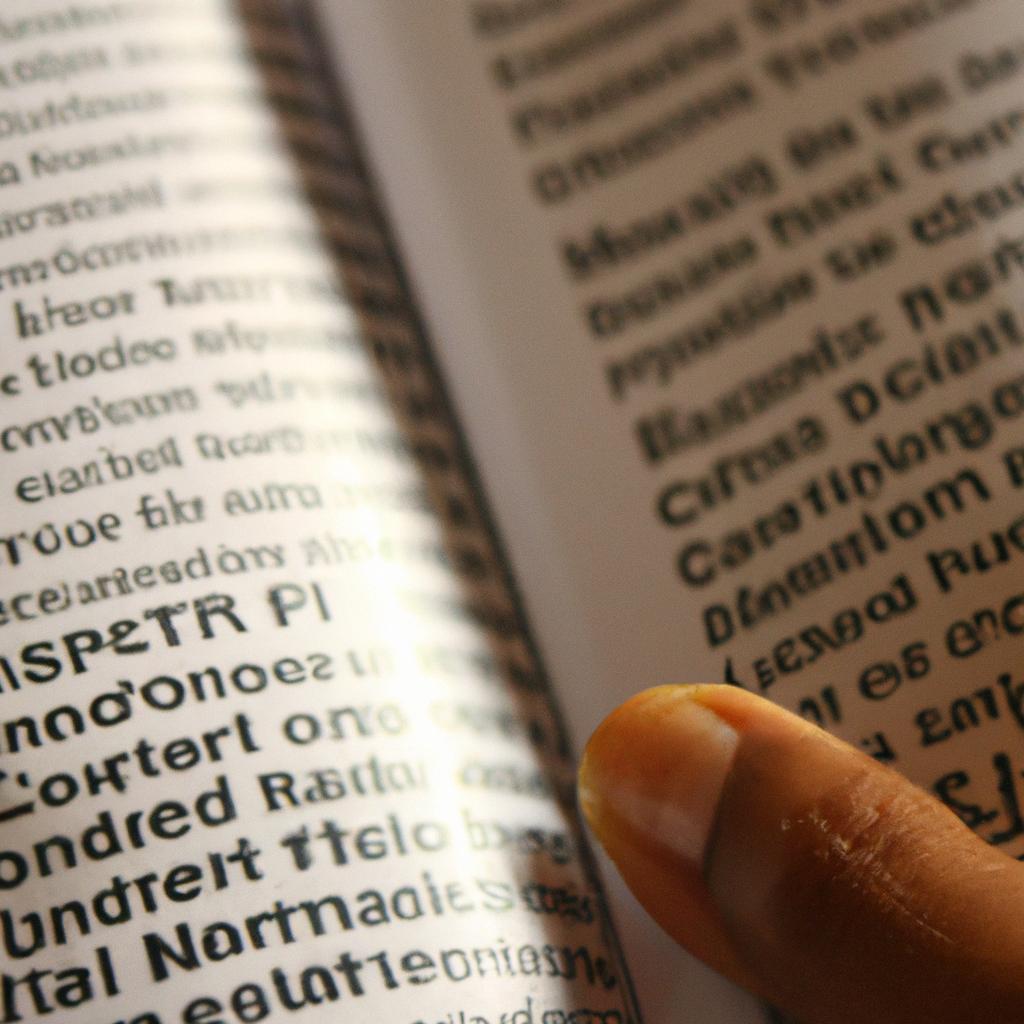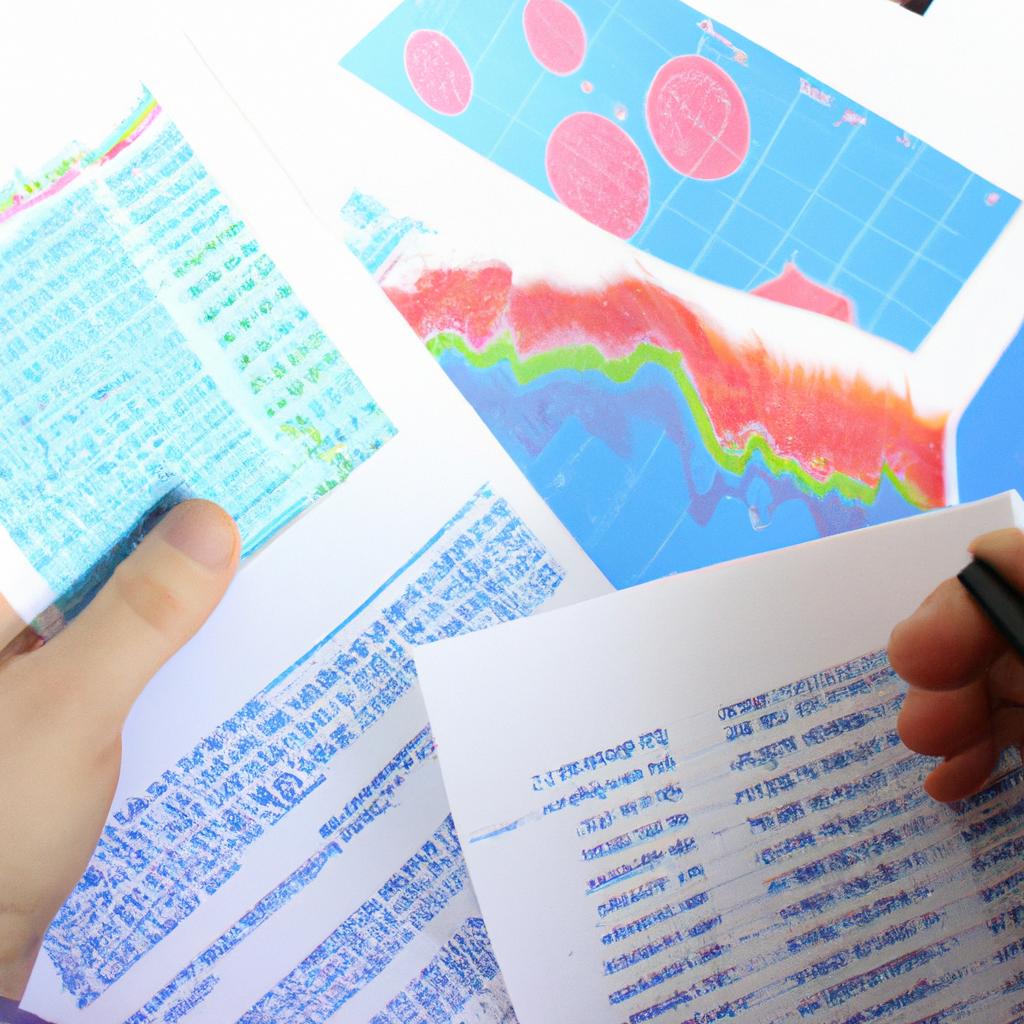Bond Pricing: A Comprehensive Guide for Investing in Bonds

Bond pricing is a crucial aspect of investing in bonds, which are fixed-income securities issued by corporations and governments to raise capital. Understanding bond pricing is essential for investors as it determines the potential yield they can earn from their investments. For instance, suppose an investor purchases a corporate bond with a face value of $1,000 and a coupon rate of 5%. If the prevailing market interest rates decrease after the issuance of the bond, its price will increase because investors would be willing to pay more for higher returns compared to other available investment options.
This comprehensive guide aims to provide readers with a deeper understanding of bond pricing and its significance in making informed investment decisions. By delving into various factors that influence bond prices such as interest rates, credit ratings, maturity dates, and market conditions, this article seeks to equip investors with practical knowledge on how to analyze and evaluate different types of bonds effectively. Additionally, this guide will explore popular strategies used by investors to maximize their returns while managing risks associated with changes in bond prices.
Understanding Bond Pricing
When investing in bonds, it is crucial to have a comprehensive understanding of bond pricing. Bond prices are determined by a variety of factors such as interest rates, credit quality, and time remaining until maturity. To grasp the concept of bond pricing better, let’s consider an example.
Imagine you are considering two bonds: Bond A and Bond B. Both bonds have a face value of $1,000 and pay a coupon rate of 4% annually. However, Bond A has five years remaining until maturity while Bond B has ten years remaining. Despite having the same coupon rate and face value, these bonds will be priced differently due to their varying maturities.
To delve deeper into the intricacies of bond pricing, we can highlight some key aspects:
- Interest Rates: As interest rates fluctuate in the market, bond prices experience inverse changes. When interest rates rise, newly issued bonds offer higher yields than existing ones with lower fixed coupon rates. Consequently, the price of existing bonds decreases to align with the new market yield.
- Credit Quality: The creditworthiness of issuers greatly affects how investors perceive risk associated with bonds. Bonds from entities with higher credit ratings tend to have lower yields since they are considered safer investments. On the other hand, lower-rated or risky bonds need to offer higher yields to compensate for the increased possibility of default.
- Time Until Maturity: The longer a bond’s maturity period, the more susceptible its price is to fluctuations in interest rates over time. Bonds with shorter maturities generally exhibit less volatility compared to those with longer maturities.
Now that we have established an overview of bond pricing fundamentals through our example and bullet points above, we can move on to exploring further factors affecting bond prices in greater detail in subsequent sections.
Factors Affecting Bond Prices
Understanding Bond Pricing: Factors Affecting Bond Prices
Consider the case of Company XYZ issuing a 10-year bond with a face value of $1,000 and an annual coupon rate of 5%. Initially, let’s assume that interest rates in the market are also 5%. In this scenario, investors would be willing to pay the full face value for the bond since it offers a yield equal to prevailing market rates. However, if interest rates were to rise after the issuance of the bond, perhaps due to changes in economic conditions or monetary policy decisions, the price of Company XYZ’s bond would be expected to decrease.
Several factors influence bond prices, including:
-
Interest Rates: As mentioned above, changes in interest rates have a significant impact on bond prices. When interest rates rise, existing bonds become less attractive because their fixed coupon payments become relatively less valuable compared to new bonds offering higher yields. Consequently, older bonds tend to decline in price to align with these changing market conditions.
-
Credit Quality: The creditworthiness of the issuer affects how investors perceive risk associated with holding its bonds. Bonds issued by entities with lower credit ratings generally offer higher yields as compensation for increased default risk. Therefore, deterioration in an issuer’s creditworthiness can lead to a decline in their bond prices.
-
Time to Maturity: The time remaining until a bond matures influences its price sensitivity to changes in interest rates. Generally speaking, longer-term bonds exhibit greater price fluctuations when interest rates change compared to shorter-term bonds.
-
Market Sentiment: Investor sentiment and market dynamics play a role in determining demand for different types of bonds at any given time. If investors anticipate adverse economic conditions or heightened uncertainty, they may flock towards safer investments such as government bonds or highly rated corporate bonds (flight-to-quality). Conversely, during periods of optimism and confidence in economic growth prospects, riskier assets like high-yield corporate bonds may attract more investor interest.
Consider the following table, which illustrates the relationship between bond prices and changes in interest rates:
| Interest Rate Change | Bond Price Movement |
|---|---|
| Increase | Decrease |
| No Change | Stable |
| Decrease | Increase |
This simple representation highlights the inverse relationship between bond prices and interest rates. When interest rates increase, bond prices generally decrease, resulting in capital losses for investors holding previously issued bonds. Conversely, when interest rates decrease, bond prices tend to rise, leading to potential capital gains.
In summary, various factors impact bond prices including fluctuations in interest rates, credit quality of issuers, time to maturity, and market sentiment. Understanding these dynamics is crucial for investors seeking to make informed decisions regarding their fixed-income investments. In the subsequent section on “The Relationship Between Bond Prices and Interest Rates,” we will delve deeper into how changes in interest rates affect bond pricing.
The Relationship Between Bond Prices and Interest Rates
In the previous section, we explored the various factors that can influence bond prices. Now, let us delve deeper into understanding the intricate relationship between bond prices and interest rates.
To illustrate this connection, consider a hypothetical scenario where an investor purchases a 10-year Treasury bond with a face value of $1,000 and a coupon rate of 3%. At the time of purchase, prevailing interest rates for similar bonds in the market are at 2%. In this case, our bond would offer a higher yield than what is currently available, making it an attractive investment option. Consequently, demand for our bond increases, driving up its price. Conversely, if interest rates rise to 4%, our bond’s yield becomes less appealing compared to newer issuances, resulting in decreased demand and subsequently lowering its price.
Understanding this dynamic relationship requires consideration of several key points:
- Interest Rate Risk: The most significant driver behind changes in bond prices is fluctuations in interest rates. As seen in our example above, when rates rise or fall relative to the coupon rate on existing bonds, their prices respond accordingly.
- Time to Maturity: Bonds with longer maturities typically experience greater price volatility due to their extended exposure to shifting interest rate environments. This sensitivity results from investors demanding higher yields as compensation for holding these longer-term obligations.
- Credit Risk: The creditworthiness of the issuer impacts how much investors are willing to pay for a particular bond. Higher-rated bonds tend to have lower yields and thus higher prices since they are considered safer investments.
- Market Sentiment: Investor sentiment plays a crucial role in determining bond prices. Economic indicators, geopolitical events, and other external factors can create shifts in market sentiment that affect supply and demand dynamics.
- Fluctuations in interest rates
- Time remaining until maturity
- Creditworthiness of the issuer
- Overall market sentiment
Furthermore, to provide a concise overview, we present a table highlighting how these factors impact bond prices:
| Factors | Impact on Bond Prices |
|---|---|
| Interest Rates | Inverse Relationship |
| Time to Maturity | Direct Relationship |
| Credit Risk | Inverse Relationship |
| Market Sentiment | Varied |
By comprehending these interconnected elements, investors can make more informed decisions when trading bonds. Understanding that bond prices are influenced by interest rates, time remaining until maturity, credit risk, and market sentiment is crucial for successful investing.
By understanding these approaches, investors can gain valuable insights into determining fair value and making sound investment choices in the bond market.
Types of Bond Pricing
The Relationship Between Bond Prices and Interest Rates can have a significant impact on the overall performance of bond investments. To further understand this relationship, let us consider a hypothetical example in which an investor purchases a corporate bond with a face value of $1,000 and an annual coupon rate of 5%.
When interest rates rise, new bonds are issued with higher coupon rates to attract investors. As a result, existing bonds with lower coupon rates become less attractive in comparison. In our example, if market interest rates increase to 6%, newly issued bonds may offer a coupon rate of 6% as well. Consequently, the previously purchased bond offering only 5% will be less desirable.
- The inverse relationship between bond prices and interest rates: This means that when interest rates rise, the price of existing bonds falls. Conversely, when interest rates decline, bond prices tend to rise.
- Yield-to-maturity (YTM): It represents the total return expected from holding a bond until maturity while considering both the periodic coupon payments and any potential capital gains or losses at maturity.
- Duration: A measure used by investors to estimate how sensitive a bond’s price is to changes in interest rates. Longer duration indicates greater sensitivity.
- Credit risk: The possibility that the issuer may default on its debt obligations increases during periods of economic downturns or financial instability.
To better comprehend these concepts related to bond pricing, we can refer to the following table:
| Concept | Explanation |
|---|---|
| Inverse Relationship | When interest rates increase, bond prices decrease; conversely, as interest rates decline, bond prices tend to increase. |
| Yield-to-Maturity | Represents the total return expected from holding a bond until it matures, taking into account both periodic coupon payments and potential capital gains or losses at maturity. |
| Duration | Indicates how sensitive a bond’s price is to changes in interest rates. Longer duration implies greater sensitivity. |
| Credit Risk | The possibility that the bond issuer may default on its debt obligations, which intensifies during economic downturns or financial instability. |
By understanding these concepts and their interplay, investors can make more informed decisions when investing in bonds.
Moving forward to the next section about “Calculating Bond Prices,” let us explore how bond prices are calculated based on various factors and formulas.
Calculating Bond Prices
In the previous section, we explored the various types of bond pricing methods that are commonly used in the investment world. Now, let’s delve deeper into the process of calculating bond prices and understand how it is done.
To illustrate this, let’s consider a hypothetical scenario where an investor named Sarah is interested in purchasing a corporate bond issued by XYZ Corporation. The bond has a face value of $1,000 with a coupon rate of 5% and a maturity period of 10 years. Before making her investment decision, Sarah wants to determine the fair price at which she should buy the bond.
Calculating bond prices involves several key factors that investors need to take into account:
-
Coupon Payments: The periodic interest payments made by the issuer to bondholders play a crucial role in determining the price of a bond. These payments are typically made semi-annually or annually based on the terms specified in the bond agreement.
-
Time Value of Money: Since future cash flows from coupon payments and principal repayment have different values compared to their present worth, it is important to discount these cash flows using an appropriate discount rate. This accounts for inflation and opportunity costs associated with investing funds elsewhere.
-
Maturity Period: The length of time until the bond reaches its maturity date also affects its price. Generally, bonds with longer maturities tend to be more sensitive to changes in interest rates as they entail greater uncertainty over an extended duration.
-
Yield-to-Maturity (YTM): YTM represents the total return an investor can expect if they hold onto the bond until maturity while reinvesting coupon payments at prevailing market rates. It serves as an indicator for assessing whether buying a particular bond is financially viable or not.
By considering these factors comprehensively, investors can calculate accurate bond prices that reflect both intrinsic value and current market conditions.
Now that we have established how to calculate bond prices effectively, the subsequent section will delve into various strategies that investors can employ to make informed decisions when it comes to bond pricing. Understanding these strategies is crucial for maximizing investment returns and managing risks in bond portfolios. So, let’s explore some key bond pricing strategies in detail.
Bond Pricing Strategies
Having discussed the intricacies of calculating bond prices, we now turn our attention to various strategies employed by investors when pricing bonds. Understanding these strategies is crucial for optimizing investment decisions and maximizing returns.
To illustrate the practical application of bond pricing strategies, let’s consider a hypothetical scenario involving an investor named Sarah. Sarah has recently inherited a significant sum of money and seeks to diversify her investment portfolio. She decides to explore different bond pricing strategies to assess their suitability based on her financial goals and risk tolerance.
Bond Pricing Strategies:
-
Buy-and-Hold Strategy:
This strategy involves purchasing bonds with the intention of holding them until maturity, irrespective of market fluctuations or interest rate changes. By adopting this approach, investors aim to benefit from regular coupon payments while ensuring the preservation of principal upon maturity. The buy-and-hold strategy is often favored by conservative investors seeking stable income streams and capital preservation over time. -
Duration Matching Strategy:
In this strategy, investors analyze the duration (a measure of a bond’s sensitivity to changes in interest rates) of their liabilities or future cash flow needs. They then select bonds that have similar durations as those liabilities or cash flows. By matching durations effectively, investors can mitigate some risks associated with fluctuating interest rates and ensure better alignment between their assets and liabilities. -
Yield Curve Strategy:
Investors employing this strategy closely monitor the yield curve, which represents the relationship between yields and maturities across different bonds in the market. By identifying patterns within the yield curve, such as upward-sloping (normal), downward-sloping (inverted), or flat shapes, investors attempt to capitalize on potential arbitrage opportunities or anticipate shifts in interest rates.
Table – Comparison of Bond Pricing Strategies:
| Strategy | Objective | Risk Profile |
|---|---|---|
| Buy-and-Hold | Stable income streams and capital preservation | Low to moderate risk |
| Duration Matching | Mitigate interest rate risks and align assets with liabilities | Moderate risk |
| Yield Curve | Capitalize on arbitrage opportunities or anticipate rate movements | Moderate to high risk |
By exploring various bond pricing strategies, investors like Sarah can make informed decisions based on their individual financial goals. Whether they prioritize stability through the buy-and-hold strategy, aim for better alignment via duration matching, or seek opportunities within the yield curve strategy, understanding these approaches is crucial for successful bond investing.
Remember that different strategies carry varying degrees of risk and potential returns. Investors are advised to carefully assess their own risk tolerance and consult with a financial advisor before implementing any investment strategy.






